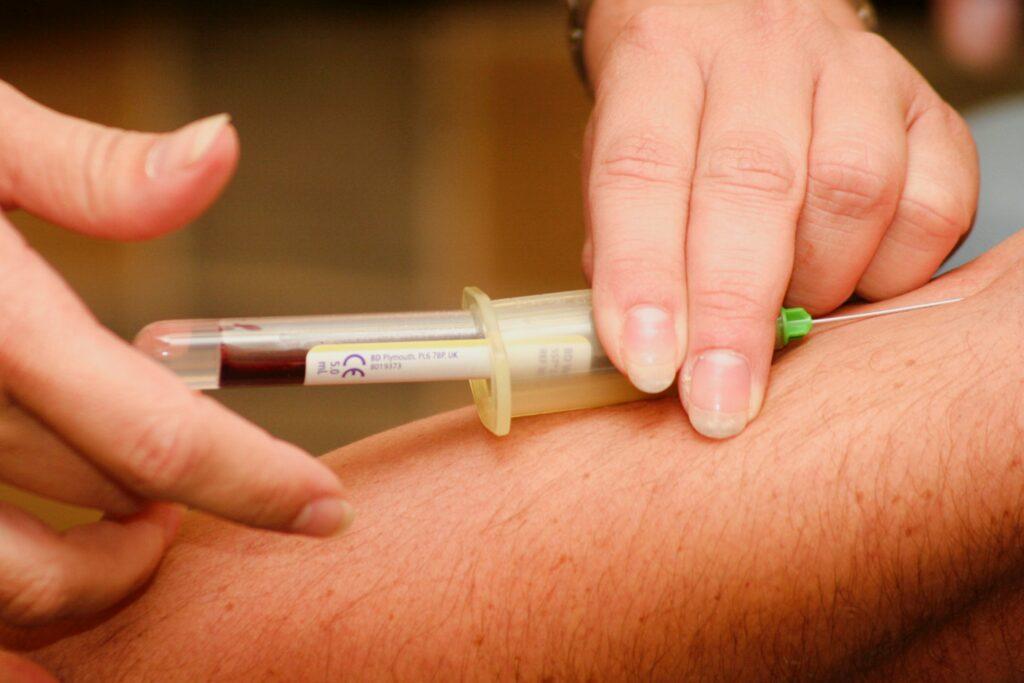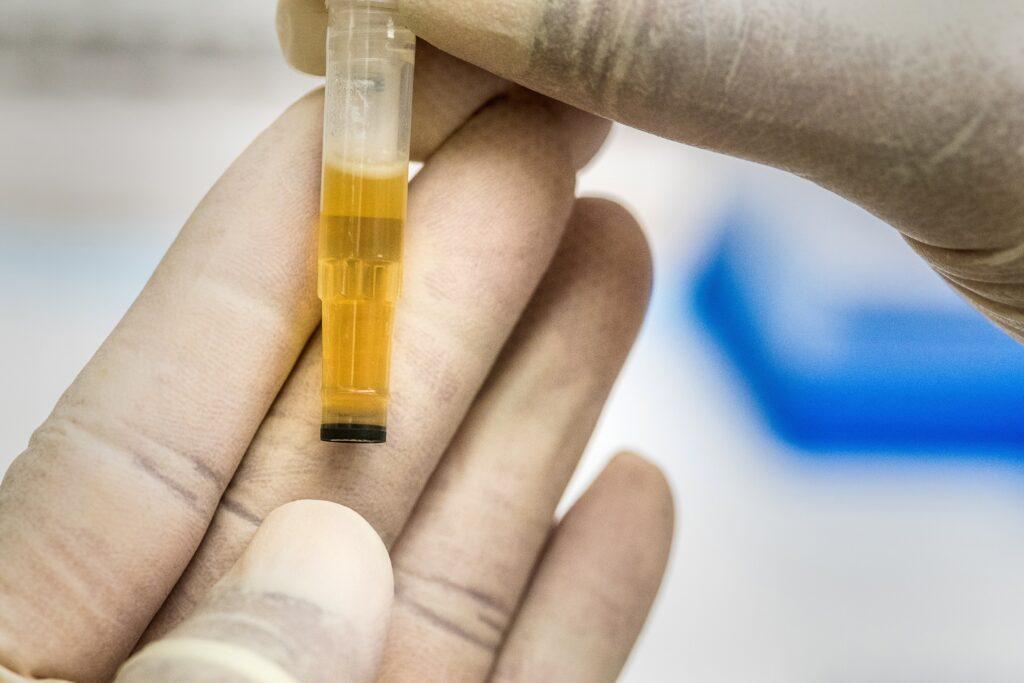What Is Bup On A Drug Test? What Does Bup Mean On A Drug Test?
Buprenorphine is referred to as Bup. The most typical usage of opioid buprenorphine (BUP) is to treat long-term opiate addiction. Suboxone, which contains naloxone to deter overuse, is frequently prescribed. Suboxone is sold under prescription as a sublingual pill (under the tongue) or strip.
Buprenorphine is a long-acting drug with a lower ceiling than its dangerous level (BUP). Increasing your dosage after a certain point will not improve your condition; it wastes more of your medication. The drug’s lethal respiratory depression threshold is substantially lower than the ceiling.
On the other hand, heroin has a high ceiling (the more you use it, the higher you become), and the point at which a user reaches a very high level is not far from the point at which it is lethal.
Bup Drug Test or Bup On Drug Screen
The government has permitted Suboxone clinics to have more permissive regulations than Methadone clinics because the risk is smaller and the effects linger for so long. Healthcare also contributes to its cost.
Due to a combination of these characteristics, buprenorphine (BUP) has emerged as the opioid of choice for drug users who are dependent on opiates but lack the resources to support a heroin addiction. Suboxone can be purchased without a prescription or traded cheaply on the open market.
In many of the hardest-hit areas, users have switched from expensive heroin and oxycodone to cheaper methamphetamine to get high and buprenorphine to ease withdrawal symptoms.
Subutex, a form of buprenorphine without naloxone, is administered to expectant mothers since it is believed to be less dangerous to developing fetuses.
Despite being developed in 1965, buprenorphine (BUP) wasn’t given the go-ahead for medicinal use until the early 1980s. In the US, buprenorphine (BUP) is classified as a schedule III substance.

Skip To:
Learn More:
- Do Crystals For Depression Work?
- Depression and ADHD: What’s the Link?
- Autism and Depression Connection, Diagnosis & Treatment
- Signs of Depression in Men, Causes, & What to Know
- Rehab for Depression & Anxiety Treatment
- What is the Best SSRI for Anxiety?
- Social Anxiety Disorder
- Grounding Techniques for Anxiety Attacks
- Mental Health Poems that are Powerful and Healing
- Short-Term Disability Mental Health
Get Help. Get Better. Get Your Life Back.
Searching for Accredited Drug and Alcohol Rehab Centers Near You?
Even if you have failed previously and relapsed, or are in the middle of a difficult crisis, we stand ready to support you. Our trusted behavioral health specialists will not give up on you. When you feel ready or just want someone to speak to about therapy alternatives to change your life call us. Even if we cannot assist you, we will lead you to wherever you can get support. There is no obligation. Call our hotline today.
(844) 597-1011Buprenorphine Factsheet
Buprenorphine Overview
The FDA has given buprenorphine approval to treat opioid dependence and acute and chronic pain. It is a drug used in agonist substitution therapy, a method of treating addiction by utilizing medication to replace a more potent full agonist opioid (such as buprenorphine or methadone) (such as heroin).
Buprenorphine and Pregnancy
Generally speaking, taking buprenorphine while pregnant is not advised. Buprenorphine use during pregnancy is barely covered in the literature. Buprenorphine use during pregnancy increases the chance that your unborn child will develop withdrawal symptoms or a buprenorphine addiction.
Buprenorphine Side Effects
More than one in one hundred persons have common side effects. If the adverse effects annoy you or do not go away, speak with your doctor or pharmacist:
- Constipation.
- Feeling or being sick (nausea or vomiting).
- Feeling sleepy or tired.
- Feeling dizzy or a sensation of spinning (vertigo).
- Confusion.
- Headaches.
- Stomach pain.
- Itching or skin rashes.
Prescription Drug Addiction Statistics
Prescription drugs are critical in modern healthcare by relieving various illnesses and health conditions. However, the misuse and abuse of prescription drugs have become a growing public health concern in recent years. To fully understand the scope of the problem, it is important to examine prescription drug statistics. These statistics can shed light on the prevalence of prescription drug use, abuse, and addiction, as well as the associated health consequences and societal impacts.
50.0%
Half of the people 12 and older have used illicit drugs at least once.
Source: NIAAA
1 million
Drug overdose deaths in the US since 2000 are nearing one (1) million.
Source: NIAAA
$35B
The federal budget for drug control in 2020 was $35 billion.
Source: NIAAA
How Long Does Buprenorphine Stay in Your System for a Drug Test? Drug Test Bup

Bup Drug Test Positive & Bup On Urine Drug Screen
When taken in large doses, buprenorphine can continue functioning in the body and generate effects for 24 to 60 hours. Nonetheless, enough of this medication remains in the body to show positive for drugs for 7 to 10 days.
What is a Bup Drug Screening or Bups Drug Test? The amount of buprenorphine taken and a person’s metabolism both affect how long it takes for effects to appear.
The time it takes for half of a dose of a chemical to completely leave the body is known as the half-life. Buprenorphine has a half-life of 24 to 42 hours, while naloxone has a half-life of 2 to 12 hours.
Little remnants of Suboxone may stay in the body even after it has left. The liver is where the body breaks down buprenorphine to create norbuprenorphine, one of its metabolites. Norbuprenorphine remains in the body after Suboxone (Bup Failed Drug Test) has entirely left a person’s system and gradually departs the body through urine over the course of several days or weeks.
Normally, norbuprenorphine leaves the body 14 days after Suboxone does, but this process might vary from person to person and take more or less time.
Norbuprenorphine takes longer to leave the body depending on factors like liver function, age, weight, how frequently Suboxone is used, and whether or not additional medications are being used at the same time as Suboxone. Suboxone may stay in the body longer if the liver is not functioning properly.
Everyone processes medication differently, so doctors must adjust the amount of medicine for each patient. Buprenorphine also builds up over time, requiring some patients to begin taking it less frequently or at a lower amount.

Get Your Life Back
Find Hope & Recovery. Get Safe Comfortable Detox, Addiction Rehab & Dual Diagnosis High-Quality Care.
Hotline(844) 597-1011What To Consider About Bup Positive Drug Test? Bup Drug Abbreviation
Patients who use buprenorphine (Bup Positive On Drug Test) as part of their treatment can be confident that favorable results will be obtained because it rarely appears on drug tests. The bulk of opioid testing looks for commonly abused semi-synthetic opiates like morphine. These tests look for drugs based on their chemical makeup.
A synthetic medication with a unique chemical makeup is buprenorphine (Bup 10 Drug Test). Even if you submit to a BUP drug test, your employer shouldn’t use the results against you. The lab that conducts the drug test must order a test specifically designed to detect buprenorphine.
The ADA protects you if your employer decides to test you for buprenorphine. A prescription for buprenorphine is evidence that you are authorized to use it legally. The medical facility where you receive treatment may potentially be able to lend you additional evidence to support your claim.

Your employer cannot discriminate against your position as a buprenorphine patient and refuse to hire you because of your prescription unless they have a compelling and legitimate reason. Only if your buprenorphine therapy would compromise workplace safety could an employer refuse you employment.
First-class Facilities & Amenities
World-class High-Quality Addiction & Mental Health Rehabilitation Treatment
Rehab Centers TourRenowned Addiction Centers. Serene Private Facilities. Inpatient rehab programs vary.
Addiction Helpline(844) 597-1011Proven recovery success experience, backed by a Team w/ History of:
15+
Years of Unified Experience
100s
5-Star Reviews Across Our Centers
10K
Recovery Success Stories Across Our Network
- Low Patient to Therapist Ratio
- Onsite Medical Detox Center
- Comprehensive Dual-Diagnosis Treatment
- Complimentary Family & Alumni Programs
- Coaching, Recovery & Personal Development Events
Bup Urine Drug Test or Bupe Drug Test
When taken in large doses, buprenorphine (Bupe Drug Test) can continue functioning in the body and generate effects for 24 to 60 hours. Nonetheless, enough of this medication remains in the body to show positive for drugs for 7 to 10 days.
The most frequently used tests, particularly by employers, are urine tests. Only 40 minutes after intake, buprenorphine can be found in urine testing; for strong, long-term users, the substance can be found for up to 2 weeks.
World-class, Accredited, 5-Star Reviewed, Effective Addiction & Mental Health Programs. Complete Behavioral Health Inpatient Rehab, Detox plus Co-occuring Disorders Therapy.
CALL(844) 597-1011End the Addiction Pain. End the Emotional Rollercoaster. Get Your Life Back. Start Drug, Alcohol & Dual Diagnosis Mental Health Treatment Now. Get Free No-obligation Guidance by Substance Abuse Specialists Who Understand Addiction & Mental Health Recovery & Know How to Help.
Bup Drug Test & We Level Up Dual Diagnosis Treatment
The definition of dual diagnosis (also referred to as co-occurring disorders) can differ between institutions. However, it is generally described as the specific treatment of someone diagnosed with a substance use disorder and a mental health disorder simultaneously. Treating dual-diagnosis clients is a critical aspect of our inpatient treatment experience because co-occurring disorders are strongly correlated with instances of substance abuse.
Creating a treatment plan that addresses the physical aspects of withdrawal, the psychological connection with drug use, and managing underlying mental health disorders is part of setting clients up for success. A thorough mental health analysis identifies possibilities for treatment. Meeting with mental health counselors and medical care providers means access to behavioral therapy and medication treatment. At our dual diagnosis treatment center, We Level Up can implement the highest quality of care.
We recognize the fragile complexities of how mental and substance abuse disorders can influence others and sometimes result in a vicious cycle of addiction. That’s why we offer specialized treatment in dual-diagnosis cases to provide the most excellent chance of true healing and long-lasting recovery.
Accepting that you may be living with a mental illness can be challenging. However, treating the presenting substance abuse case can be magnitudes easier once properly diagnosed and treated. Only a properly trained medical professional can diagnose these underlying conditions. If you believe you are suffering from a disorder alongside addiction, we urge you to seek a qualified treatment center to begin your journey to recovery. Call We Level Up today.
Most Popular Bup Drug Test FAQs
-
What’s bup on a drug test?
Buprenorphine is a medication that is sometimes used to treat opioid addiction and may appear on a drug test as an opioid. However, many standard drug tests do not screen for buprenorphine, so a specific test may be required to detect it. Additionally, if someone is legally prescribed buprenorphine, they should disclose this information to the testing facility or their employer to avoid any confusion or misinterpretation of the results.
-
What is the Bup Drug Meaning? Whats Bup On A Drug Test?
Buprenorphine is a medication commonly used to treat opioid addiction and pain. If someone is prescribed buprenorphine, it may appear on a drug test as an opioid, as it acts on the same receptors in the brain. However, buprenorphine is a partial agonist, meaning it has a weaker effect than full agonist opioids like heroin or oxycodone. It is less likely to cause the same euphoria or respiratory depression. Some drug tests are specifically designed to detect buprenorphine, particularly in the context of addiction treatment.
-
Bup Meaning In Drug Test
Buprenorphine is a medication used to treat opioid addiction and pain management. It can appear on a drug test as an opioid or synthetic opioid, depending on the test used. Some drug tests specifically screen for buprenorphine, while others may not detect it unless it is specifically being looked for. If someone is taking buprenorphine as prescribed by a doctor, they should inform the testing facility or their employer to avoid any misunderstandings.
-
What’s Bup On A Drug Test
Buprenorphine is a medication used to treat opioid addiction and chronic pain. It may be included in a drug test panel to detect the presence of opioids in a person’s system or to ensure that they are taking their prescribed medication as directed. Buprenorphine can be detected in urine and blood tests several days after use.
Experience Transformative Recovery at We Level Up Treatment Centers.
See our authentic success stories. Get inspired. Get the help you deserve.
Start a New Life
Begin with a free call to an addiction & behavioral health treatment advisor. Learn more about our dual-diagnosis programs. The We Level Up Treatment Center Network delivers recovery programs that vary by each treatment facility. Call to learn more.
- Personalized Care
- Caring Accountable Staff
- World-class Amenities
- Licensed & Accredited
- Renowned w/ 100s 5-Star Reviews
We’ll Call You
Bup Drug Test, Prescription Drug Abuse Informative Video
Abuse of prescription drugs is a severe public health problem that affects millions of people globally. It happens when people use prescription drugs for purposes other than what they are supposed to, such as getting high or managing stress. Prescription opioid medicines, sedatives, and stimulants are frequently abused. Abuse of prescription medications can have several harmful effects, such as addiction, overdose, and death. Addressing this expanding issue requires raising awareness of the risks associated with prescription drug addiction, promoting safe pharmaceutical use, and ensuring access to efficient treatment.
Search We Level Up Bup Drug Test Resources
Sources
[1] National Institute of Mental Health – ‘Depression’ (www.nimh.nih.gov)
[2] U.S. Food and Drug Administration (FDA) (www.fda.gov/)
[3] Depression Treatment » Drug Alcohol Addiction Rehab
[5] NIMH – https://www.nimh.nih.gov/health/publications/social-anxiety-disorder-more-than-just-shyness
[6] Selective Serotonin Reuptake Inhibitors – National Center for Biotechnology Information, U.S. National Library of Medicine
[7] ‘Anxiety Disorders’ – National Institute Of Mental Health (Nimh.nih.gov)
[8] Psychopharmacology of anxiety disorders – National Center for Biotechnology Information, U.S. National Library of Medicine
[9] Products – Data Briefs – Number 379 – September 2020 (cdc.gov) Depression – National Institute of Mental Health
[10] Coping with Stress – Centers for Disease Control and Prevention


